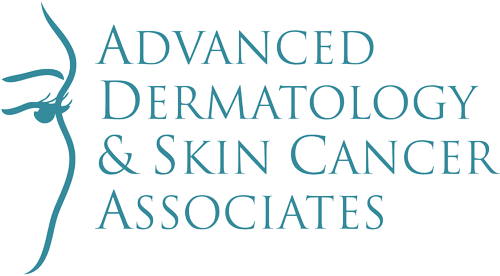Photodynamic Therapy (PDT) is an acne treatment in Memphis, Arlington, and Olive Branch which utilizes light and a photosensitizing agent to target and eliminate acne-causing bacteria and reduce oil production. At Advanced Dermatology & Skin Cancer Associates, we offer this cutting-edge treatment to target the root causes of acne and help you achieve clearer, healthier skin.
Eliminate Unwanted Acne And Promote Clear Skin
Photodynamic Therapy (PDT) for acne is an innovative procedure that combines light and a photosensitizing agent to treat acne. First, a photosensitizer solution is applied to your skin, making it sensitive to light. Then, a specific wavelength of light is directed onto the treated area, activating the photosensitizer to target acne-causing bacteria and reduce oil production. This process shrinks oil glands and eliminates bacteria without damaging surrounding skin tissue. PDT offers a promising solution for persistent acne.

Photodynamic Therapy (PDT) Treats:
- Inflammatory acne lesions (papules, pustules)
- Non-inflammatory acne lesions (blackheads, whiteheads)
- Sebaceous hyperplasia (enlarged oil glands)
- Excess sebum (oil) production
- Skin texture issues due to acne breakouts
Our dermatology & cosmetic treatments are available conveniently in two Memphis locations and in Olive Branch, MS. Contact our team to book your acne treatment at the location that’s best for you.
How Does PDT Acne Treatment Work?
Acne breakouts stem from the interplay of several factors, including excess sebum production, the proliferation of Propionibacterium acnes bacteria within hair follicles, and inflammation. When hair follicles become clogged with excess sebum and dead skin cells, it creates an ideal environment for bacterial growth, leading to inflammatory and non-inflammatory acne lesions. Book a consultation with our expert dermatologists for acne treatment in Memphis, Arlington, and Olive Branch.
Photodynamic Therapy (PDT) uses light and a photosensitizing agent to combat acne at its root. First, a photosensitizer is applied to the skin. This photosensitizer selectively accumulates in the sebaceous glands and acne lesions. When exposed to a specific wavelength of light, the photosensitizer becomes activated and destroys acne-causing bacteria while reducing sebum production, effectively treating existing acne and preventing future breakouts.
What Are The Benefits Of Our Memphis Acne Treatment?
- Non-invasive treatment option
- Minimal downtime compared to some other acne treatments
- Targeted approach, specifically addressing acne lesions and sebaceous glands
- Potential for long-lasting results with continued improvement over time
- Versatility in treating various types of acne lesions
- Reduced risk of antibiotic resistance compared to oral antibiotics
- May improve overall skin texture and appearance
- Customizable treatment plans to suit individual skin types and needs
- Generally well-tolerated with minimal side effects

Acne Treatment FAQs
Who is a candidate for Photodynamic Therapy (PDT) for acne?
The ideal candidates for PDT acne treatment in Memphis, Arlington, and Olive Branch are individuals with moderate to severe acne who have not responded well to conventional treatments like topical medications or oral antibiotics. It can be particularly beneficial for those with inflammatory acne lesions, as well as individuals seeking an alternative to systemic medications or who wish to avoid potential side effects associated with long-term antibiotic use.
How many Photodynamic Therapy (PDT) sessions are required to see results?
The number of PDT sessions needed to see improvement varies depending on the severity of your acne and your individual response to treatment. In general, two to three sessions spaced two to three weeks apart may be recommended for optimal results. However, severe cases of acne may necessitate up to five sessions.
Are there any side effects or risks associated with Photodynamic Therapy (PDT) for acne?
Common side effects of PDT for acne include redness, swelling, and mild discomfort in the treated area, similar to a sunburn. These side effects are usually temporary and resolve within a few days following the procedure. You can use pressed mineral-based powder, available in department stores and drug stores, to camouflage redness without it “looking” like makeup.
How long do I need to stay indoors after Photodynamic Therapy (PDT)?
Following Photodynamic Therapy (PDT), it is essential to remain indoors for at least 48 hours to avoid sun exposure – especially during those sunny Memphis summers. Your skin becomes photosensitive during this time, and exposure to sunlight could lead to severe burns or other adverse reactions. Once the redness and inflammation have subsided over a few days, you may consider using topical acne lotions. However, it’s essential to do so only under the guidance of your provider.

Why Choose Us For Your Acne Treatments In Memphis
Advanced Dermatology & Skin Cancer Associates is the premier dermatology and skin care clinic in the Mid-South for conditions like acne. Our dermatologists specialize in Photodynamic Therapy acne treatment in Memphis, Arlington, and Olive Branch and provide personalized plans tailored to your specific needs and concerns. If you’re struggling with persistent acne and seeking an effective solution, schedule a consultation with us to learn how PDT can help you achieve clearer, healthier skin.